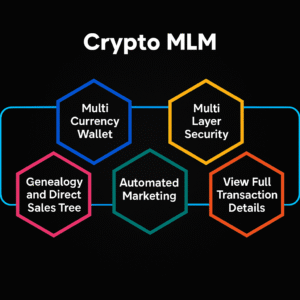
DeFi stablecoin minting is the process of creating new stablecoins by putting up collateral, like money or crypto, into a smart contract on the blockchain. This ensures that each stablecoin remains stable in value, usually pegged to something like the dollar. Once the collateral is verified, new stablecoins are issued to the user. This system helps keep DeFi platforms stable and liquid, but it requires careful management to avoid risks and stay compliant with regulations.
What is Minting Stablecoins?
Minting Stablecoins is the process of creating new stablecoins by depositing collateral into a smart contract on a blockchain, ensuring that each coin maintains a stable value pegged to an asset like fiat currency. This method is often used by Defi Token Development to provide liquidity and stability within decentralized finance platforms. By verifying the collateral and issuing stablecoins accordingly, these companies help maintain a steady and reliable financial ecosystem in DeFi.
Types Of Stablecoin Minting
There are three main types of stablecoin minting:
-
Fiat-Collateralized Stablecoins
These are backed by reserves of fiat currency, like USD. For every stablecoin issued, an equivalent amount of fiat is held in reserve, ensuring stability.
-
Crypto-Collateralized Stablecoins
These are backed by other cryptocurrencies. Users deposit a cryptocurrency as collateral to mint stablecoins. Typically, more collateral is required than the value of the stablecoins to account for price volatility.
-
Algorithmic Stablecoins
These stablecoins use algorithms and smart contracts to control the supply and maintain their value. They are not backed by collateral but rely on market mechanisms to keep their value stable.
How Safe is DeFi Stablecoin Minting?
DeFi Stablecoin Minting can be safe if certain factors are well managed. Key to its security are robust and well-audited smart contracts, effective collateral management (especially in crypto-collateralized models), and regulatory compliance for fiat-backed stablecoins. Algorithmic stablecoins rely on precise algorithms and market mechanisms to maintain stability. Regular audits and transparency by Defi Development Companies also play a crucial role in ensuring the safety of the minting process, helping to prevent potential vulnerabilities and maintain trust.
Common Issues in Stablecoin Technology
Common issues in Stablecoin Technology include:
-
Smart Contract Vulnerabilities
Bugs or flaws in smart contracts can lead to security breaches or stability issues, potentially affecting the stability or integrity of the stablecoin.
-
Collateral Management Risks
For crypto-collateralized stablecoins, inadequate management or sudden market volatility can lead to under-collateralization, jeopardizing the stablecoin’s value.
-
Regulatory Challenges
Compliance with financial regulations is complex and varies by jurisdiction. Failure to adhere to regulatory standards can lead to legal issues and affect the stablecoin’s legitimacy.
-
Algorithmic Instability
Algorithmic stablecoins, which rely on market mechanisms and algorithms to maintain stability, can face challenges if the algorithms fail to accurately adjust the supply or if market conditions become extreme.
-
Transparency and Trust
Lack of transparency in how reserves are managed or how stability mechanisms work can undermine user trust and lead to concerns about the stablecoin’s reliability.
7 Best Role of Stablecoin Minting in DeFi
Here are seven key roles of stablecoin minting in DeFi:
-
Liquidity Provision
Stablecoins enhance liquidity in DeFi Platforms by providing a stable and readily available medium of exchange, facilitating smooth trading and transactions.
-
Stable Value
They maintain a consistent value pegged to assets like fiat currency, offering users a reliable store of value amidst the volatility of other cryptocurrencies.
-
Decentralized Transactions
Stablecoin minting supports decentralized financial operations by enabling transactions without relying on traditional banking systems, fostering inclusivity.
-
Collateral for Loans
Stablecoins are commonly used as collateral in DeFi lending and borrowing platforms, providing a stable asset that can be leveraged for loans and other financial activities. Stablecoin Lending Trends have been evolving rapidly, influencing how these assets are utilized within the DeFi ecosystem.
-
Hedging Against Volatility
They offer a way to hedge against the volatility of other cryptocurrencies, allowing users to move their assets into a stablecoin to avoid market swings.
-
Yield Farming
Stablecoins are often used in yield farming and staking strategies within DeFi, where users earn rewards or interest by providing liquidity or participating in DeFi protocols.
-
Cross-Platform Integration
They facilitate interoperability across various DeFi platforms by serving as a standard, stable medium of exchange that can be used seamlessly in different decentralized applications and protocols.
Why Choose Nadcab Labs Stablecoin Minting?
Choosing Nadcab Labs for stablecoin minting ensures advanced security through well-audited smart contracts and effective collateral management strategies that maintain stability. Their commitment to regulatory compliance and transparency builds trust, while their innovative algorithms manage supply and value stability efficiently. With seamless integration capabilities across DeFi platforms and extensive industry expertise, Nadcab Labs offers a reliable and optimized solution for stablecoin minting in the decentralized finance ecosystem.







